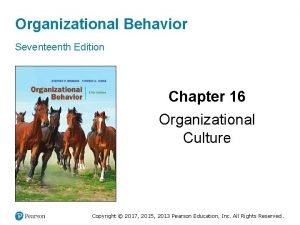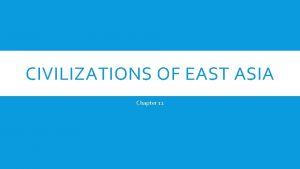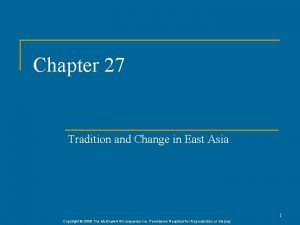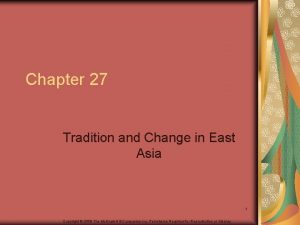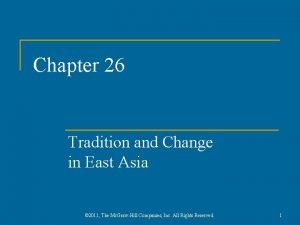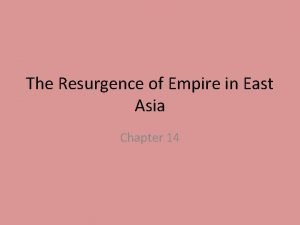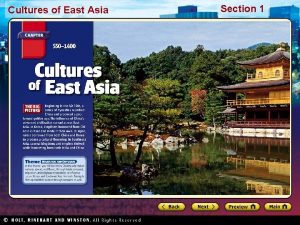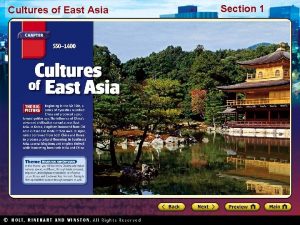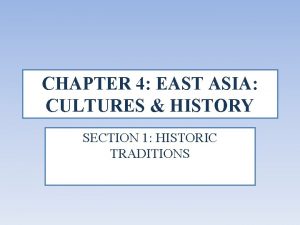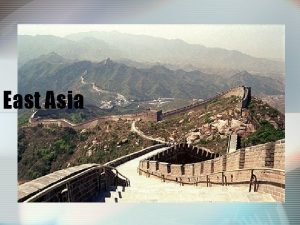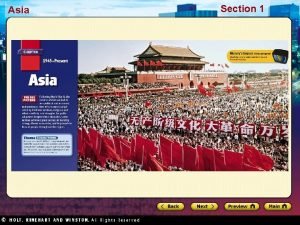CHAPTER 4 EAST ASIA CULTURES HISTORY SECTION 2








- Slides: 8

CHAPTER 4: EAST ASIA: CULTURES & HISTORY SECTION 2: PEOPLE AND CULTURES

TRADITION AND CHANGE • In 1949, the Communists took over China and began making changes to China’s traditions. • They replaced the old system of private land ownership with “Communes” • Many farmers refused to work in the communes. • Food was insufficient so the government allowed some private land ownership again.

• Communists tried to control the population by enforcing laws like: marrying in late twenties and having only one child per family. • Women rights improved. They were allowed to own property, choose their husband get a divorce.

OLD AND NEW CHINA • Old traditions are still strong in rural China. • Even in big cities like Beijing, the Capital, the streets are filled with three-wheeled cabs pedaled like tricycles. • Tiny shops exists side by side with modern buildings.

CHANGES IN THE KOREAS • In Koreas family is very important. • In rural areas grandparents, uncles, aunts and children all live in one household. • In urban areas family consists usually of parents and children.

A BLEND OF OLD AND NEW IN JAPAN • Japan is the most modern country of East Asia. • 80% of the population lives in the urban areas. • Still people follow the same old traditions. Once they go back home from work they change into their kimonos and sit on mats or a low table to have dinner.

EAST ASIA’S PEOPLE • CHINA: • About 90% of the Chinese people are from the Han ethnic group. • The other Chinese people came from other 55 different groups.

• KOREA AND JAPAN: • Korean language was brought to Korea by the Nomads.
 Spiritual organization
Spiritual organization Chapter 5 section 1 cultures of the mountains and the sea
Chapter 5 section 1 cultures of the mountains and the sea Chapter 13 section 1 cultures clash on the prairie
Chapter 13 section 1 cultures clash on the prairie Lesson quiz 11-3 civilizations of east asia
Lesson quiz 11-3 civilizations of east asia Chapter 27 section 1 landforms and resources
Chapter 27 section 1 landforms and resources Chapter 27 tradition and change in east asia
Chapter 27 tradition and change in east asia Chapter 27 tradition and change in east asia
Chapter 27 tradition and change in east asia Chapter 26 tradition and change in east asia
Chapter 26 tradition and change in east asia Chapter 14 the resurgence of empire in east asia
Chapter 14 the resurgence of empire in east asia
